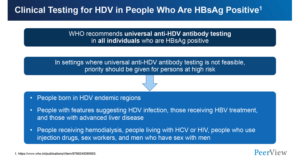
Researchers from NYU Langone Health and NYU Grossman School of Medicine are part of a major undertaking that will bring together more than 40 scientists, doctors, and industry experts from around the country to make vision-restoring whole-eye transplants a reality.
We have unique experience in that we are the only institution to have successfully transplanted the eye. This award marks an exciting milestone toward restoring vision through eye transplantation.”
Daniel J. Ceradini, MD, director of research and associate professor in the Hansjörg Wyss Department of Plastic Surgery
NYU Langone successfully performed the world’s first whole-eye and partial-face transplant in 2023, resulting in a viable transplanted eye. Although the eye has not regained vision, a portion of its light-sensitive nerve cells have survived, offering important findings to further eye transplant research.
As part of this project, teams from NYU Langone and NYU Grossman School of Medicine will refine best practices for surgical protocols in eye transplantation, molecularly profile the transplanted eye to investigate how it is surviving, and identify biomarkers of rejection. The teams will also contribute scientific findings gathered from their experience in preserving a donated eye and in regenerating the donor optic nerve and integrating it into the recipient’s brain.
“This funding is instrumental in advancing patient care while deepening our scientific understanding of complex biological challenges—a hallmark of the Institute for Translational Neuroscience and other centers across the NYU Langone Health and NYU Grossman School of Medicine ecosystem,” said Shane Liddelow, PhD, associate professor in the Department of Neuroscience and Physiology and the Department of Ophthalmology. “Such groundbreaking research cannot be achieved in isolation, and it is the collaborative effort of our brightest minds and our partnerships with leading institutions across the United States that makes this work possible.”
The award of up to $56 million is from the Advanced Research Projects Agency for Health (ARPA-H) Transplantation of Human Eye Allografts (THEA) program. The awarded project title is Viability, Imaging, Surgical, Immunomodulation, Ocular preservation and Neuroregeneration (VISION) Strategies for Whole Eye Transplant—a reflection of the breadth of the collaboration assembled to solve such a complex challenge. Jeffrey Goldberg, MD, PhD, Blumenkranz Smead professor and chair of ophthalmology at the Byers Eye Institute at Stanford University, will serve as principal investigator for the project. José-Alain Sahel, MD, professor and chair of the Department of Ophthalmology at the University of Pittsburgh, will co-direct the initiative with Dr. Goldberg.
“Our discoveries since our landmark transplant case mark promising initial results, laying a foundation for further advancements and ongoing research,” said Eduardo D. Rodriguez, MD, DDS, director of the Face Transplant Program and the Laura and Isaac Perlmutter Cosmetic Plastic Surgery Center, the Helen L. Kimmel Professor of Reconstructive Plastic Surgery, and chair of the Hansjörg Wyss Department of Plastic Surgery. “We look forward to continuing this research in collaboration across this amazing partnership of institutions to help accelerate these discoveries.”
Kevin Chuen Wing C. Chan, PhD, assistant professor in the Department of Radiology and the Department of Ophthalmology, added: “Our researchers are well positioned to leverage our expertise in ophthalmology, radiology, neuroscience, and plastic surgery to advance the scientific underpinnings and clinical outcomes of whole-eye transplantation. We are excited to take part in this important collaborative research across U.S. institutions via this funding.”
The biggest challenge the team will face is moving whole-eye transplants from aesthetic to functional by figuring out how to regenerate the optic nerve, which connects the eye to the brain.
“A successful sighted whole-eye transplant is an audacious goal, but one that could transform countless lives,” said Kathryn A. Colby, MD, PhD, the Elisabeth J. Cohen, MD, Professor of Ophthalmology and chair of that department at NYU Grossman School of Medicine. “The ARPA-H funding is an important step in this project.”
The ‘whole’ plan
The VISION for Whole Eye Transplant project is holistic in every sense of the word.
The team is made up of a potent mix of expertise and skill, which will be needed as they simultaneously advance and create cutting-edge medical devices, artificial intelligence integrations, new surgical techniques, regenerative medicine breakthroughs and rejection mitigation. The group will work dynamically, sharing information in real-time and pursuing the most promising leads.
Meticulous donor eye selection, advanced ocular imaging and specialized logistics in organ procurement and preservation will also be critical for success, and collaborators on this team are already the established leaders in these key areas of transplant science. In the end, tailored post-care rehabilitation for eye recipients will also be needed to set patients on the right track.
Amid the technical details, accessibility plays a major role in the plan.
While whole eye transplants are the north star of the three-phase, six-year project, the effort will undoubtedly bring with it more breakthroughs along the way, and that is just as exciting, Dr. Goldberg said.
This research was partly, funded by the Advanced Research Projects Agency for Health (ARPA-H). The views and conclusions contained in this document are those of the authors and should not be interpreted as representing the official policies, either expressed or implied, of the United States Government.




